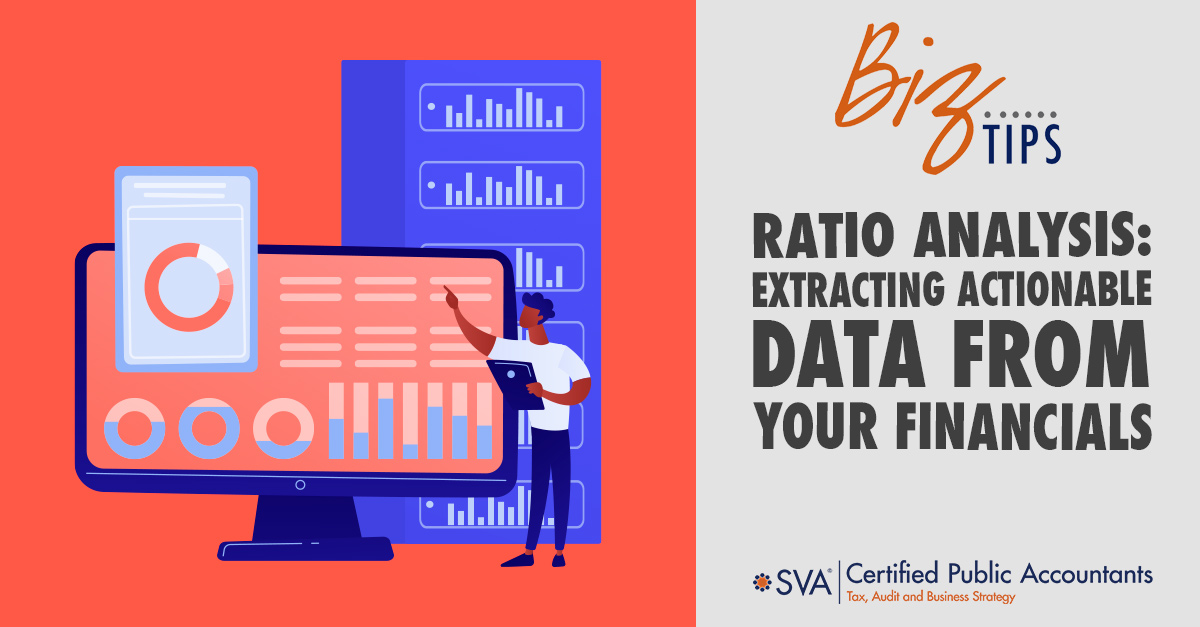What do you do with your financial statements when your auditor delivers them?
Resist the temptation to just file them away — they’re more than an exercise in compliance.
With a little finagling, you can calculate key financial ratios from line items in your company’s financial statements. These metrics provide insight into historical trends, potential areas for improvement, and how the business is likely to perform in the future.
(Download Video Transcript)
4 Principal Categories for Financial Ratios
Financial ratios are generally grouped into the following four principal categories:
1. Operating
Operating ratios — such as the gross margin or earnings per share — evaluate management’s performance and the effects of economic and industry forces. Operating ratios can illustrate how efficiently a company is controlling costs, generating sales and profits, and converting revenue to cash.
This analysis shouldn’t stop at the top and bottom of the income statement. Often, it’s useful to look at individual line items such as returns, rent, payroll, owners’ compensation, interest, and depreciation expense.
2. Asset Management
Asset management ratios gauge liquidity, which refers to the ability of a company to meet current obligations. Commonly used liquidity ratios include:
| Current Ratio |
The ratio of current assets to current liabilities |
| Quick Ratio |
Only considers assets that can be readily liquidated such as cash and accounts receivable |
| Days in Receivables Outstanding |
Estimates the average collection period for credit sales |
| Days in Inventory |
Estimates the average time it takes to sell a unit of inventory |
It’s also important to consider long-term assets, such as equipment, with the total asset turnover.
This ratio tells how many dollars in revenue a company generates from each dollar invested in assets. Management must walk a fine line with:
| Efficient Asset Management |
Aims to minimize the amount of working capital and other assets on hand |
| Satisfying Customers and Suppliers |
Calls for flexible credit terms, ample safety stock, and quick bill payment |
3. Coverage
Coverage ratios measure a company’s capacity to service its debt.
| Times Interest Earned |
Measures a firm’s ability to meet interest payments and indicates its capacity to take on additional debt. |
| Current Debt Coverage |
Can be used to measure a company’s ability to repay its current debt. |
Before a company that already has significant bank debt seeks further financing, it should calculate its coverage ratios. Then it should consider what message management sends to potential lenders.
4. Leverage
Leverage ratios can indicate a company’s long-term solvency. The long-term debt-to-equity ratio represents how much debt is funding company assets.
For example, a long-term debt-to-equity ratio of five-to-one indicates that the company requires significant debt financing to run operations. This may translate into lower returns for shareholders and higher default risk for creditors.
And, because the company needs to make considerable interest payments, it has less cash to meet its current obligations.
Basis of Comparison
Ratios mean little without appropriate benchmarks.
Comparing a company to its competitors, industry averages, and its own historical performance provides perspective on its current financial health.
Contact us to help select relevant ratios to include in your analysis. We can help you create a scorecard from your year-end financial statements that your in-house accounting team can recreate throughout the year using preliminary financial numbers.
© 2022

